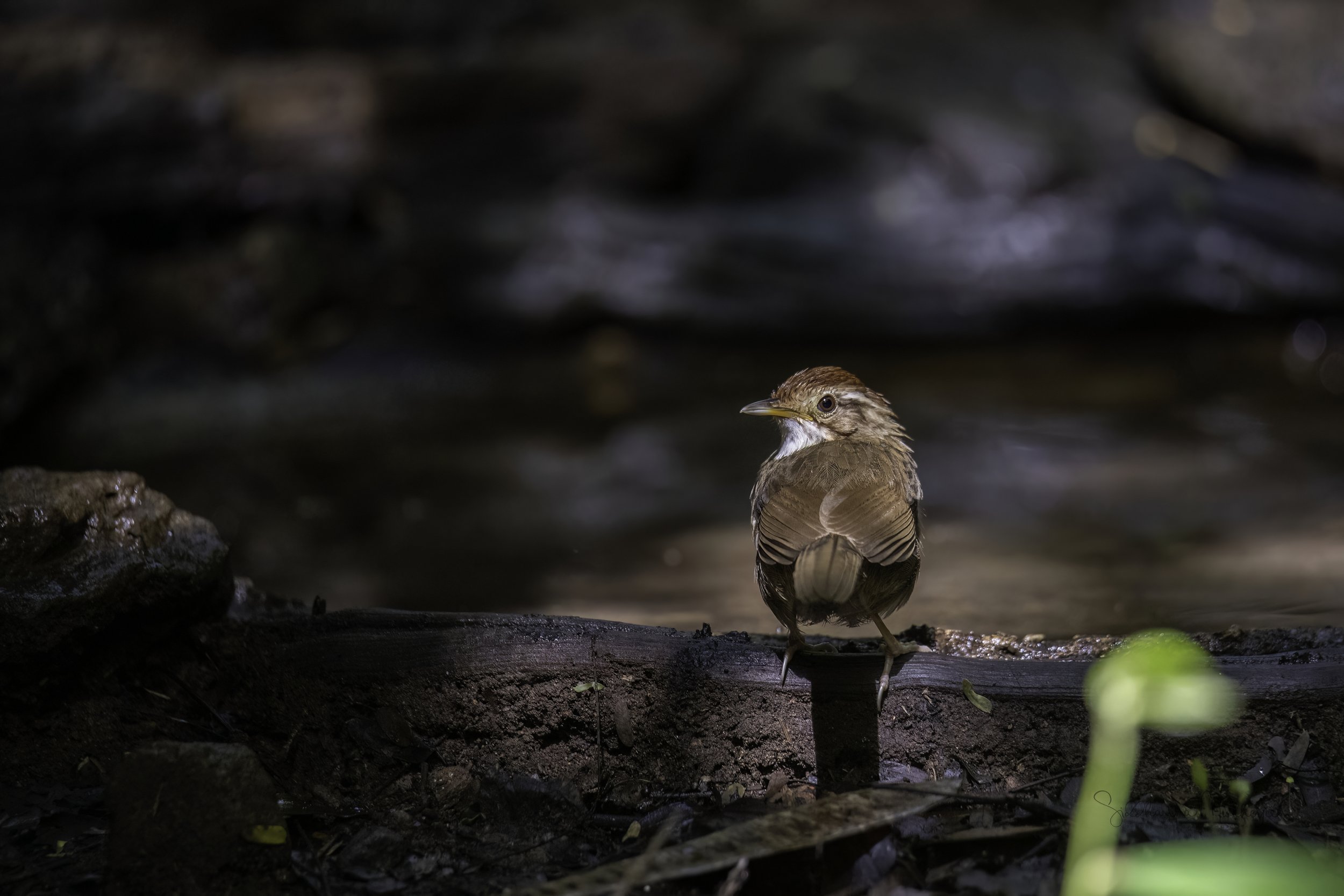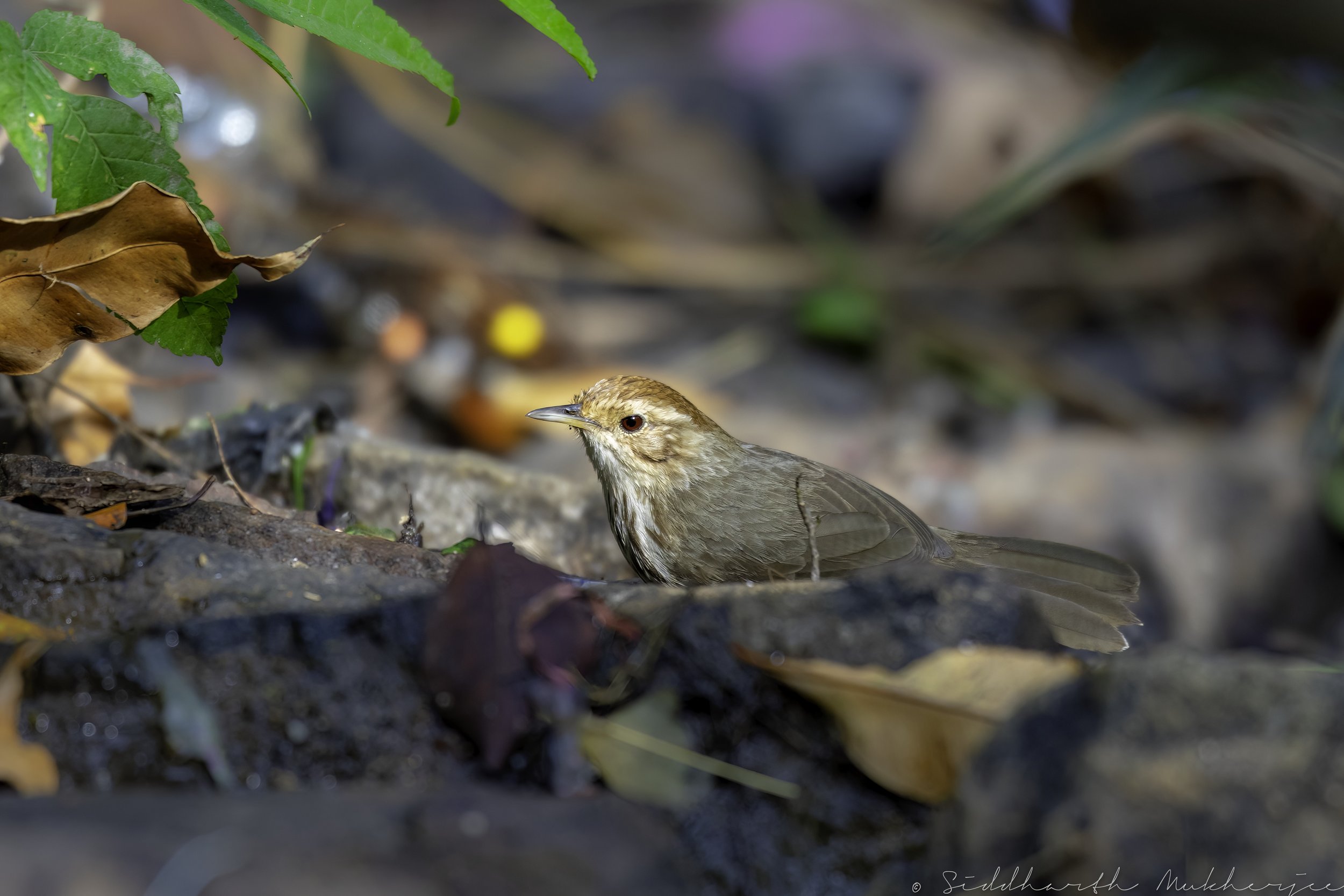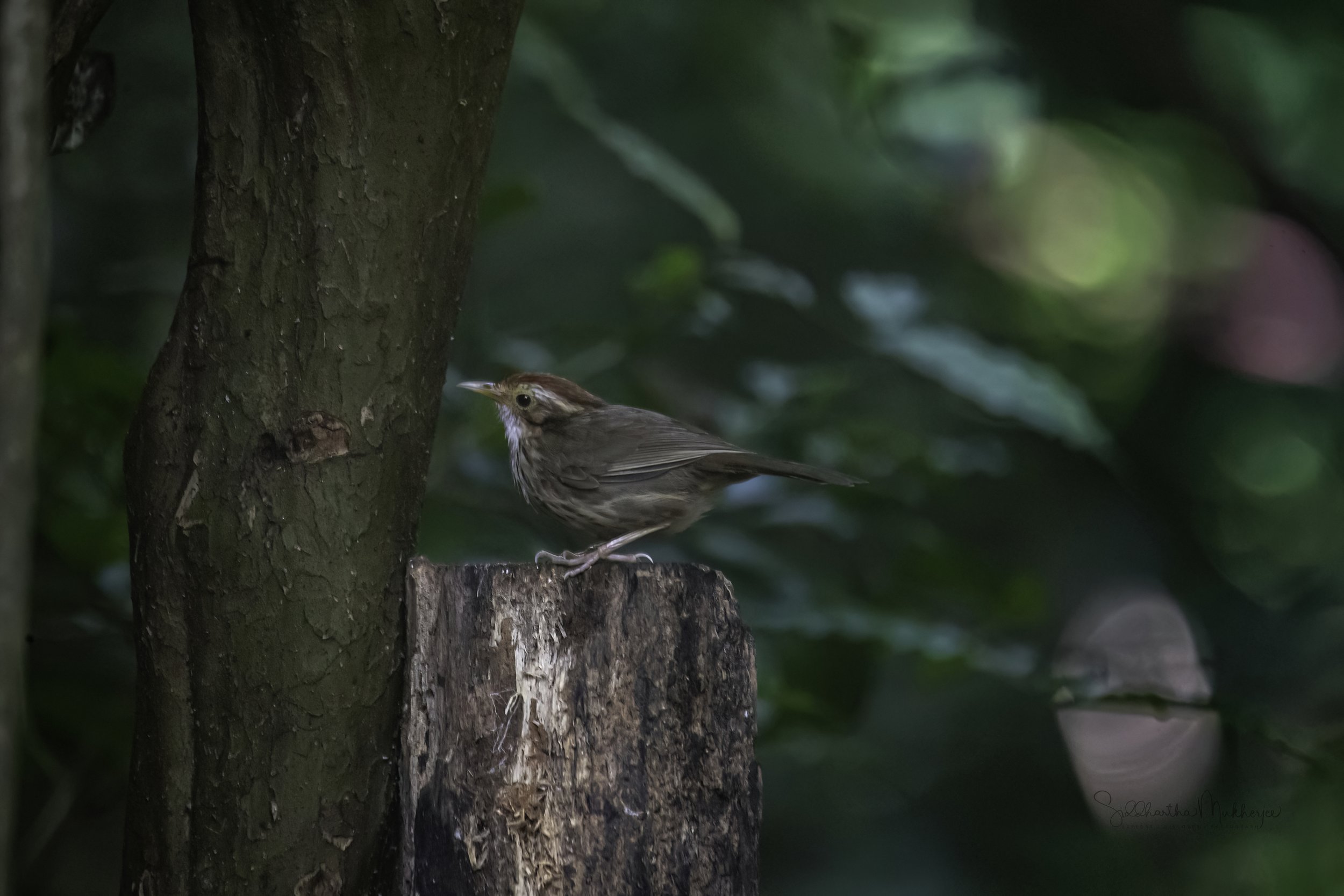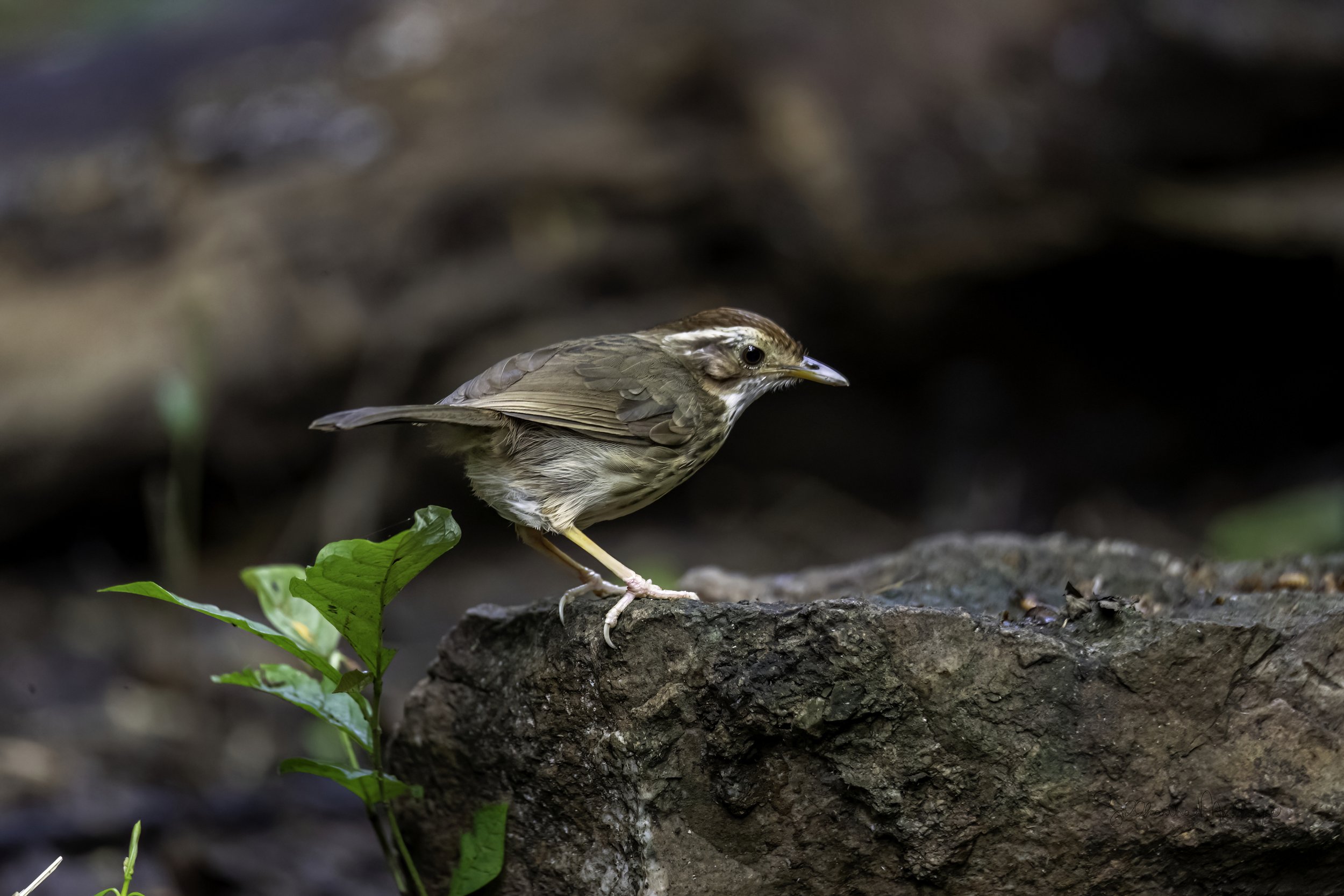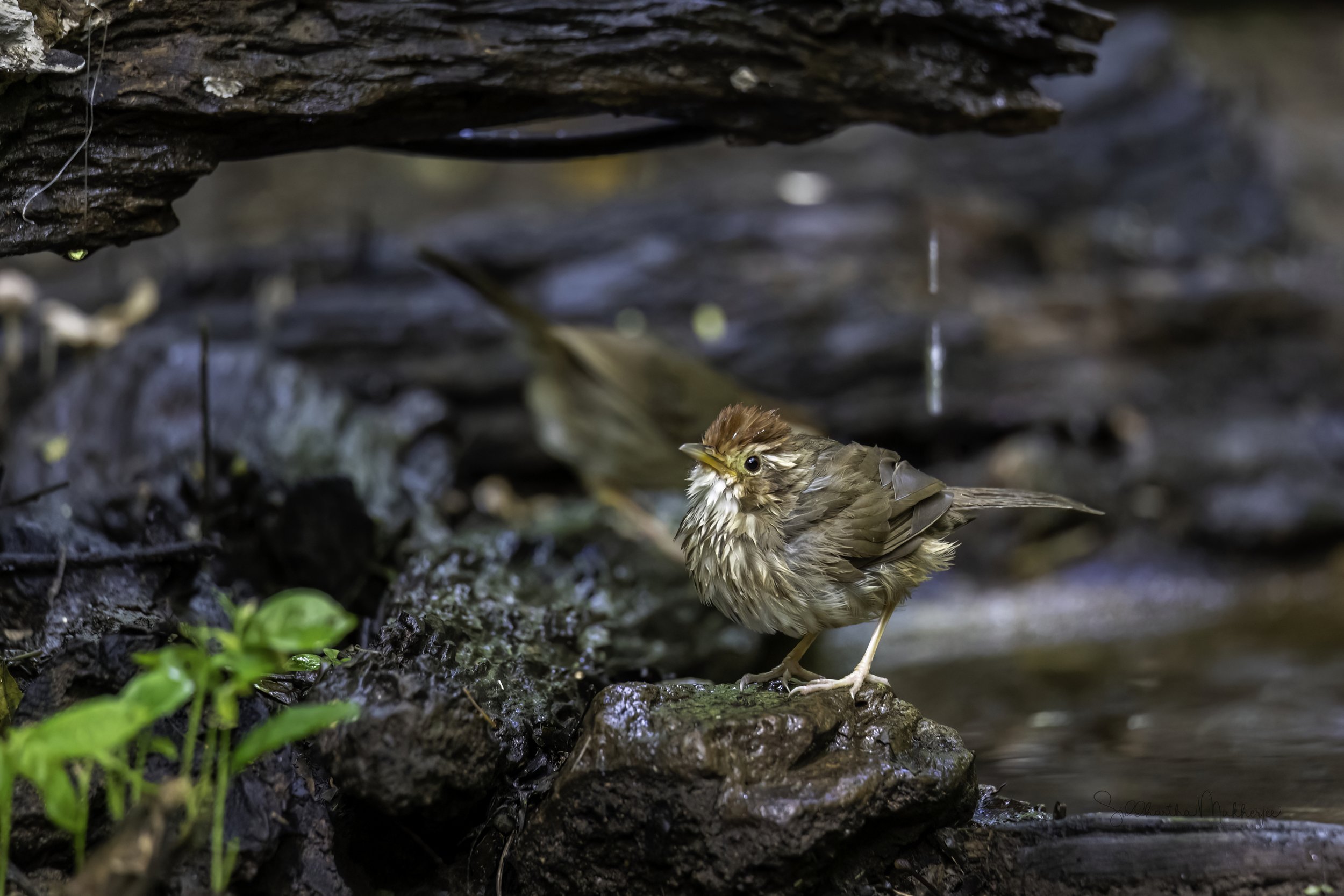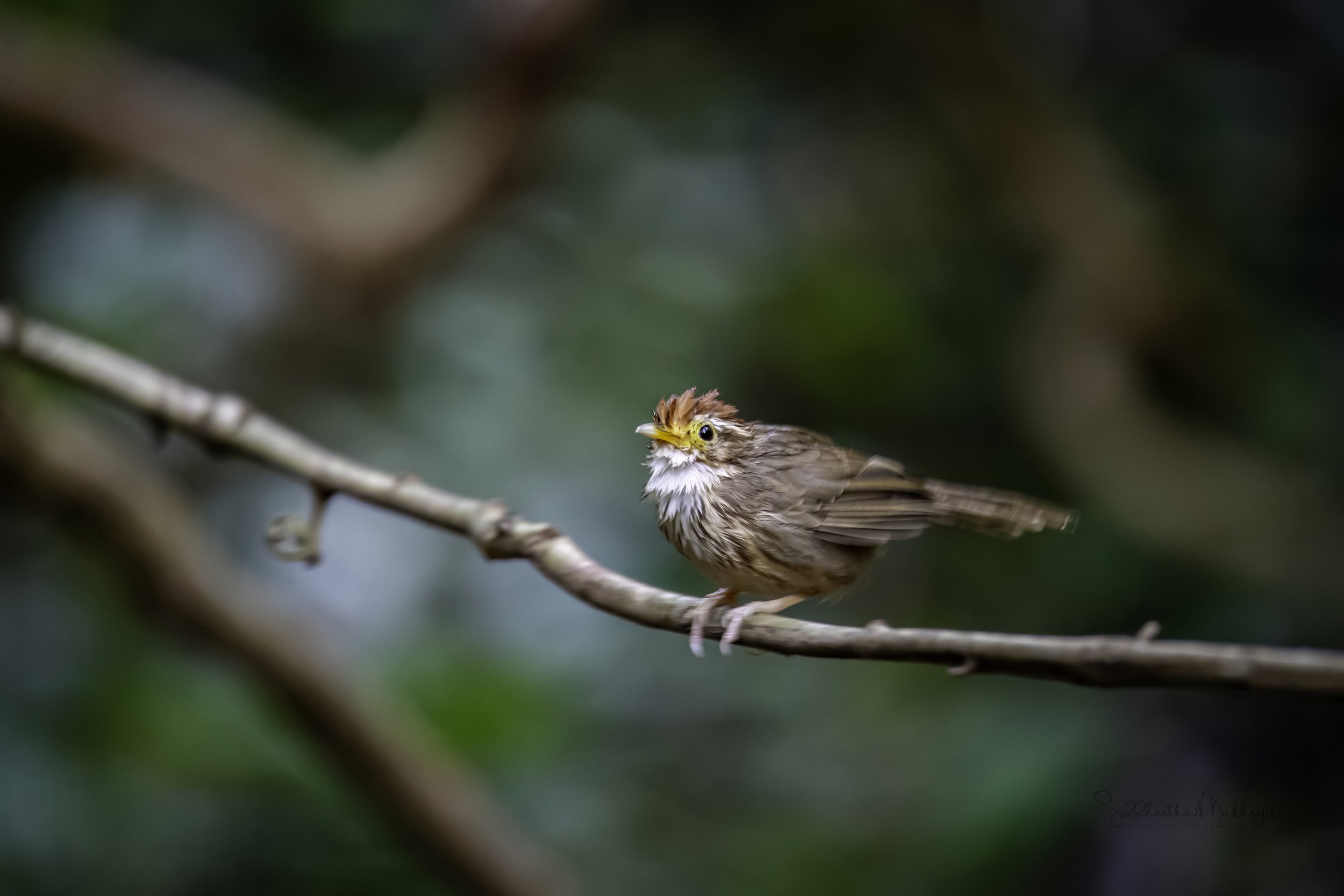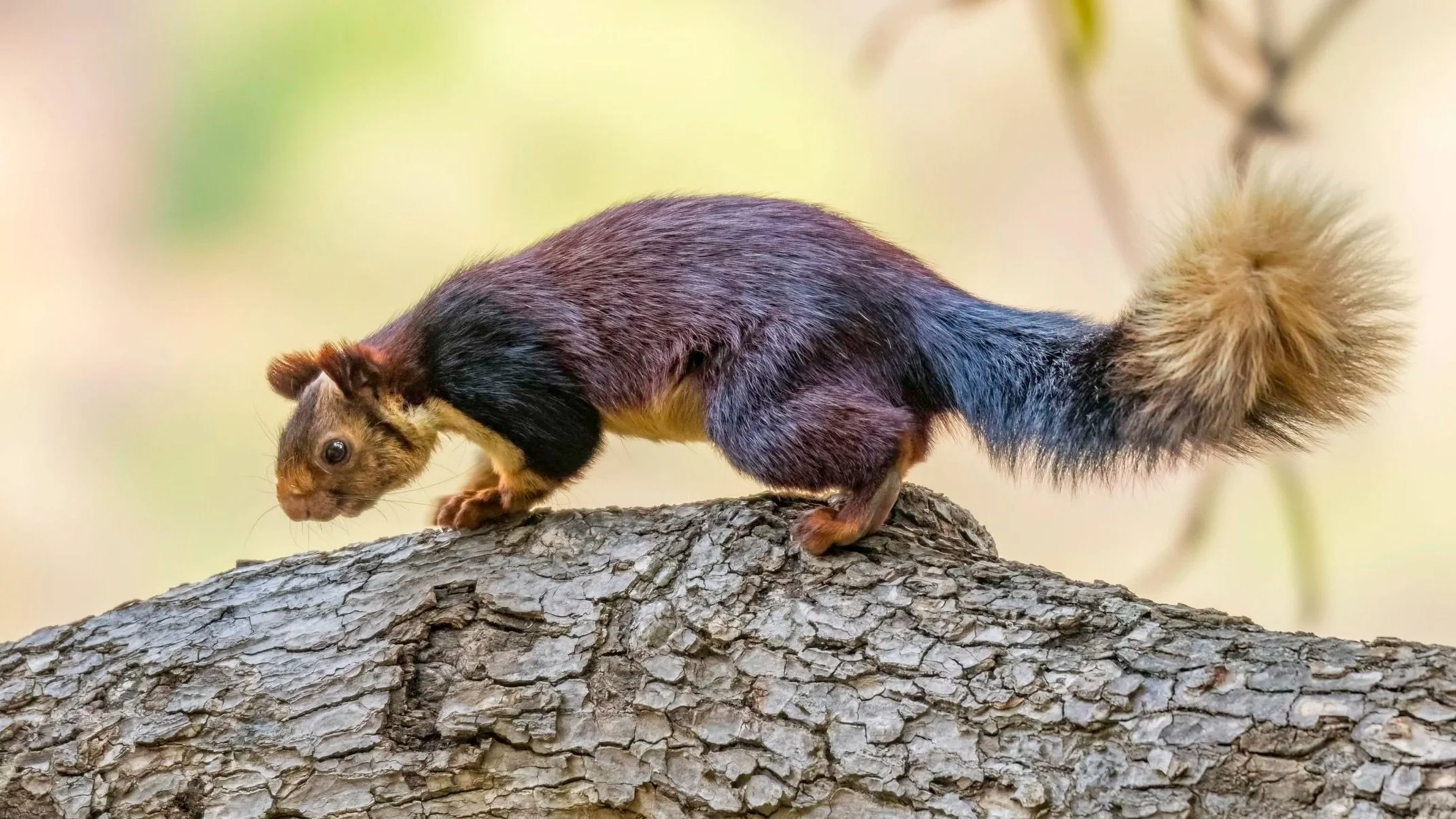Puff-throated Babbler
Pellorneum ruficeps
Uma Maheshwaram Temple Complex, Telangana & Kaeng Krachan National Park, Thailand
Located in the central stretch of the Deccan Plateau, Telangana has sub-tropical climate and the terrain consists mostly of hills, mountain ranges, and thick dense forests covering an area of 27,292 km². The annual rainfall ranges between 1,100 mm to 1,200 mm and the annual temperature varies from 15 C to 45 C. The State is drained by a number of rivers which include Godavari and Krishna.
Telangana is endowed with rich diversity of flora and fauna. It has dense teak forests on the northern part along the banks of river Godavari. As per the Champion & Seth Classification of Forest Types (1968), the forests in Telangana belong to three Forest Type groups, which are further divided into 12 Forest Types. The State Government has taken up a massive greening programme, 'Telangana Ku Harita Haram' in the State to plant and protect 230 crore seedlings over a period of 4 years. This initiative aims at achieving the twin objectives of increasing the forest cover and reduce pressure on the existing forest resources, through massive community participation by Vana Samrakshna Samithis (VSS) and Eco-Development Committees (EDCs) in Protected Areas and Watershed Development Committees in the Watershed areas. Recorded Forest Area (RFA) in the State is 26,904 km² of which 20,353 km² is Reserved Forest, 5,939 km² is Protected Forest and 612 km² is Unclassed Forests. In Telangana, during the period 1st January 2015 to 5th February 2019, a total of 9,420 hectares of forest land was diverted for non-forestry purposes under the Forest Conservation Act, 1980 (MoEF & CC, 2019). As per the information received from the State during that last two years, 12,730 ha of plantations including avenue plantations in the State.
Three National Parks and nine Wildlife Sanctuaries constitute the Protected Area network of the State covering 5.08% of its geographical area and our focus area today is the northern fringe of the Nallamalla forest located both in Telangana and Andhra Pradesh. Our little bird today is from these forests near the Uma Maheshwaram Temple complex & the Kaeng Krachan National Park in Thailand.
Uma Maheshwaram
Uma Maheshwaram is a temple dedicated to the Hindu god Shiva in Telangana, India dating back to the 2nd century A.D. Located in the Nallamala Forest around 100 km from Hyderabad on the Hyderabad-Srisailam highway (NH7), and 4 km from the village of Rangapur, Achampet, Nagarkurnool district, it is the northern gateway of Srisailam — one of the jyotirlingas. Uma Maheshwaram is located on a hill surrounded by high trees and the nearby hills shield the temple & the 500-metre stretch to PapaNasanam from sunlight for most of the day, maintaining a lower temperature than the surroundings throughout the year. PapaNasanam is renowned for the mystery surrounding its source of water and the also the apparently infinite nature of this water supply. One can always find a mug of water irrespective of how much has already been drawn from it throughout the year. The source of this infinite water is still unknown. Till date the jungles around PapaNasanam are home to numerous Sadhus who meditate here for spiritual enlightenment.
The Nallamala Forest surrounding this temple is part of the Eastern Ghats and hosts the Nagarjunsagar-Srisailam Tiger Reserve, the largest tiger reserve in India, spread over the five districts of Nandyala, Prakasam, Guntur, Nalgonda and Mahabub Nagar. The Nagarjunsagar-Srisailam Tiger Reserve is also home to numerous ancient temples especially the one at Srisailam of Lord Mallikarjuna and his consort goddess Bhramaramba, an incarnation of Parvathi as the fair-complexioned boon from Brahma. The Srisailam temple is one of the twelve sacred Shaiva Jyotirlingas and one of the eighteen Maha Shakthi peethas of India.
This area also contains the ruins of the Nagarjuna Viswa Vidyalayam and was once the location of many Buddhist universities and monasteries. The ruins of a fort from the 3rd century BCE Indian ruler, Ikshwaku Chandragupta overlook the Nirjivapuram (Lifeless city) valley. The ancient fort of king Pratap Rudra of the Kakatiya dynasty and several other forts are visible on the banks of the Krishna River. An ancient 169 km long wall constructed there by the Kakatiyas is an impressive historic feature. The area also contains several rock shelters and cave temples, including our focus area of Uma Maheshwaram, and others like Akka Mahadevi Bhilam, Dattatreya Bhilam, Kadalivanam, and Palankasari.
Kaeng Krachan National Park
Kaeng Krachan National Park is the largest national park of Thailand on the border with Burma, contiguous with the Tanintharyi Nature Reserve. It is located in Phetchaburi and Prachuap Khiri Khan Provinces, about 60 km from Phetchaburi and 75 km from Hua Hin. Covering an area of 2,914 km² it is the largest national park in Thailand. The park is part of the Western Forex Complex that covers 18,730 km² across 19 protected sites between Myanmar and Thailand, bounded by the Tanintharyi Nature Reserve along Myanmar's border to the west. A dense rain forest on the eastern slope of the Tenasserim Mountain Range where the Pranburi & Phetchaburi Rivers originate. Both rivers originate from the Tanaosri Mountain Range. In the north, Phetchaburi River flows into Kaeng Krachan Dam and flows further east all the way out to the Gulf of Thailand. Pran Buri River flows south to Prachuap Khiri Khan Province, into Pran Buri Reservoir and out to the Gulf of Thailand.
The park was declared a reserve in 1964 and on 12 June 1981 it became the 28th national park of Thailand. Originally covering an area of 2,478 km², it was enlarged in December 1984 to include the boundary area between Phetchaburi and Prachuap Khiri Khan Provinces, an additional 300,000 rai. The park has been included in the list of ASEAN Heritage Parks. Since 2011, Thailand has proposed that Unesco designate Kaeng Krachan National Park a world heritage site.
Mammal species such as leopards, clouded leopards, bears, stump-tailed macaques, sambhar deer, barking deer, elephants, dholes, golden jackals, gaurs, serows, yellow-throated martens, various civet species, crab-eating mongooses and many others can be found in the park.
Puff-throated Babbler
The Puff-throated Babbler is a personable and medium-sized babbler, often observed foraging in noisy, lively flocks on or around the forest floor. It is clay coloured with brown-streaked breast and flanks & buffy white underparts. The nominate race has a dull rufescent crown, nape and upper mantle, indistinct buffy tips of forehead feathers, buffy-whitish supercilium from bill base over buff-brown ear-coverts; the upper parts warm-tinged pale greyish-brown, upperwing and tail browner with greyish-brown fringes; chin to lower belly buffy whitish, breast with prominent, broad pale grey-brown streaks that become broader and more suffused on flanks, vent lightly tinged buff with broad pale grey-brown centres; iris orange-brown to deep crimson; upper mandible greyish-brown, lower mandible fleshy yellow; legs yellowish-flesh or brownish-flesh. Both sexes are similar. Some subspecies have streaks on the mantle while others, especially in Peninsular India, are unstreaked.
They are found in scrub and moist forest mainly in hilly regions foraging in small groups on the forest floor, turning around leaf litter to find their prey and usually staying low in the undergrowth where they can be hard to spot. However, they have loud and distinct calls, including a morning song, contact and alarm calls. It is the type species of the genus Pellorneum which may, however, currently include multiple lineages. They occurs from lowlands up into hilly and mountainous forests and their song can be a distinctive series of two to three notes (“two-chee-deer!”), a more extended melodic warble, or a descending chattering trill. Gives rasping, rattling calls, often while flipping leaves on the ground in foraging flocks.
The widespread distribution of the puff-throated babbler with population variations has led to nearly thirty subspecies being described. The nominate population is found in peninsular India (excluding the Western Ghats). The population in the northern Eastern Ghats is paler and has been called pallidum while a well-marked dark form occurs in the southern Western Ghats, which has been named granti (includes olivaceum). The western Himalayas population is punctatum (includes jonesi) and in the east is mandellii, which has streaking on the back and nape as well as having call differences. In the east of India, south of the Brahmaputra River occurs chamelum while ripley is found in a small region in eastern Assam (Margherita). Further east in Manipur is vocale and pectorale in Arunachal Pradesh and northern Burma with stageri further south, followed by hilarum, victoriae and minus. Further east are found shanense, subochraceum, insularum, indistinctum, chtonium, elbeli, acrum, oreum, dusiti, vividum, ubonense, euroum, deignani, dilloni and smithi. Several others have been described and many populations are difficult to assign to subspecies. This is the type species for the genus Pellorneum and its generic placement is assured, although other species currently included in the genus may be reassigned
The puff-throated babbler Inhabits floor & under storey of deciduous or broadleaf evergreen forest, teak forest, secondary growth, bamboo, tea gardens, scrub, sholas, lantana thickets at forest edge, thickets in ravines and along watercourses, acacia, Ziziphus, etc.; occurs up to 1900 m. This bird is a common resident breeder in the Himalayas and the forests of Asia. Like most babblers, it is not migratory, and has short rounded wings and a weak flight. Its habitat is scrub and bamboo thickets and it forages by turning over leaves to find insects.
Puff-throated babblers vocalize often. Their calls are a series of whistling notes ascending in scale and they can be persistent. The breeding season is mainly during the rainy season. They build a nest on the ground at the base of a bush. The nest is dome-shaped and constructed of leaves and twigs with an entrance on the side. The opening usually points downhill when the nest is on sloping ground. The clutch varies from 2 to 5 eggs, with northern populations tending towards larger clutches. Parent birds run rodent-like in the undergrowth as they move in and out of the nest. Young birds fledge and leave the nest about 12 to 13 days after hatching.
Some of these birds were photographed in and around the temple complex of Uma Maheshwaram. This is a temple dedicated to the Hindu god Shiva located in the Nallamala Forest around 100 km from Hyderabad on the Hyderabad-Srisailam highway, about 4 kms from the village of Rangapur, Achampet.
Uma Maheshwaram is the northern gateway of Srisailam — one of the jyotirlingas, on a hill surrounded by high trees. Nearby hills shield the Uma Maheshwaram temple and the 500-metre stretch to PapaNasanam from sunlight for most of the day, maintaining a temperature lower than the surroundings through out the year. The area abounds in flora and fauna like the beautiful and vulnerable Yellow-throated Bulbul. Read about the birds of Uma Maheshwaram.
‡‡‡‡‡
For a print of the beautiful birds from my various sojourns click on the button below to read my process and order a limited edition canvas.
‡‡‡‡‡
Related Posts

